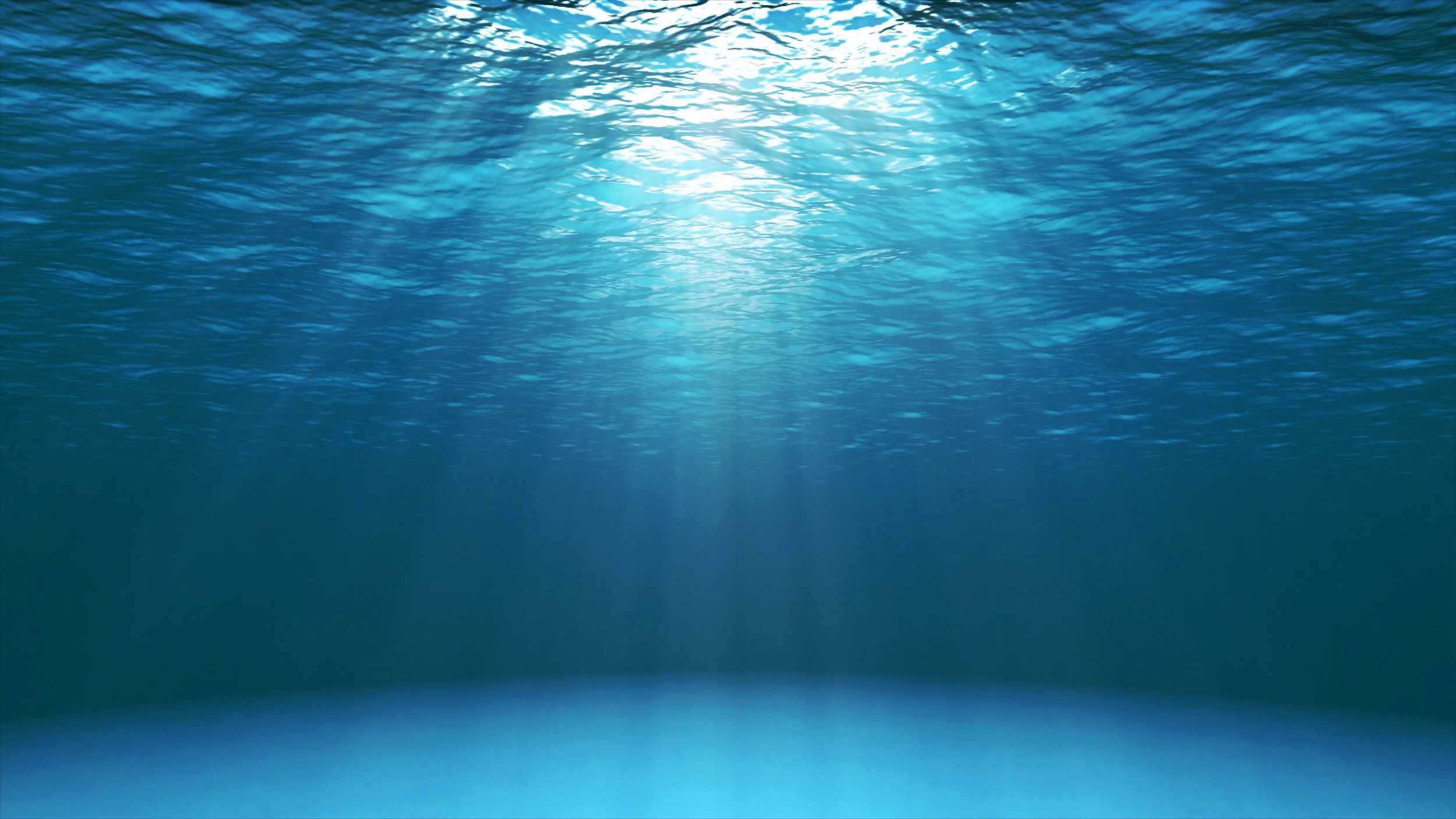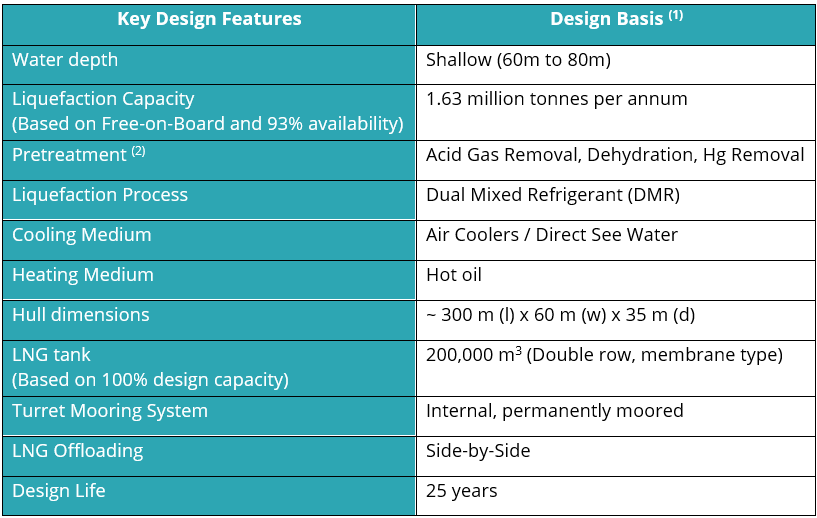Highlights:
Pre-feasibility study demonstrates a Kimberley based Floating Liquified Natural Gas (FLNG) facility is a technically, commercially, and economically feasible option to commercialise the 100% Buru Energy owned Rafael gas and condensate resource based on independently assessed potential recoverable volumes of over one TCF (trillion cubic feet) of gas and over 20 million barrels of condensate (1).
(1) Refer to Buru Energy’s ASX release of 26 April 2022 for full definitions and disclosures, and Attachment 1 for additional details.
The study, conducted in collaboration among Transborders Energy, Buru Energy and Technip Energies confirmed that a compact, regionally located ~1.6 million tonnes per annum (MTPA) FLNG facility, in conjunction with onshore condensate and LPG processing is an economically robust path for development of the Rafael 3C resource and could provide a relatively lower cost and shorter time frame to development than alternative gas export options.
Buru Energy will continue to work with Transborders Energy and its multi-project collaboration partners including Kyushu Electric Power, Mitsui O.S.K. Lines, Technip Energies, SBM Offshore and Add Energy (part of ABL Group ASA), to progress commercial discussions and to refine the cost and schedule parameters for the next phase of project definition. Buru Energy has also identified the potential for the development to benefit from Carbon Capture and Storage (CCS) solutions being developed by Buru Energy’s Geovault subsidiary.
Conducting these studies in parallel with the ongoing appraisal of the Rafael resource will ensure a faster transition to Front End Engineering and Design (FEED) following appraisal drilling in 2024, and a reduced delivery timeframe to first product sales from this potentially regionally significant project.
Transborders Energy (Transborders) is pleased to announce that it has completed a pre-feasibility study (study) for a Kimberley based compact Floating LNG (FLNG) plant solution with Buru Energy (Buru, Company) regarding Buru’s potentially large-scale Rafael conventional gas and condensate discovery in the Canning Basin.
Commenting on the study, Transborders Director Daein Cha said:
“We are pleased to continue collaborating with Buru for deploying our FLNG Solution with the aim to accelerate the commercialisation of Buru’s Rafael related assets. With the Governments of Australia and its key trading partners of Japan and South Korea reaffirming the critical importance of enhancing energy security via cooperation through secure and reliable LNG trade and investment, this development could materially contribute to this important cause.”
Commenting on the completion of the study, Buru’s CEO Thomas Nador said:
“Following on from Buru’s acquisition of Origin Energy’s Canning Basin Joint Venture interests announced less than two months ago that gave it 100% ownership of the regionally significant Rafael resource, the completion of this study is a significant step forward in the commercialisation pathway for Rafael.
The value of this study extends beyond affirming technical and economic feasibility for an FLNG option for the 3C volumes of the Rafael resource – it is a potential solution and partnership model that integrates the full LNG value chain via highly credible energy industry participants from LNG buyers, shippers, project delivery specialists and investors all working together to bring gas resource developments like Rafael to reality. In combination with onshore condensate and LPG processing, the development concept is compelling, and work will continue to further refine the concept and progress commercial discussions.”
Study Background and Strategic Rationale
As part of Buru’s ongoing work to commercialise its potentially large-scale Rafael conventional gas and condensate discovery, Buru and Transborders entered into an agreement in November 2022 to conduct a pre-feasibility study for a Kimberley based compact FLNG solution, to test the technical, commercial, and economic merits of this concept.
This potential solution, involving LNG export via a localised offshore facility and onshore condensate and LPG separation was chosen to complement other commercialisation options for Rafael gas and condensate, which continue to be developed in parallel by Buru and third-party engineering contractors to ensure rapid progression of development on a selected concept following planned Rafael resource appraisal in 2024. These parallel studies are being developed to a similar level of definition as the FLNG study and are due to be completed in in the second quarter of 2023.
Transborders is a gas resource development company focussed on accelerating the monetisation of a range of discovered but undeveloped gas resources in Australia and overseas. It has partnered with substantial Japanese LNG buyers and multinational Engineering, Procurement, Construction, and Installation (EPCI) and Operation and Maintenance (O&M) service providers to co-deliver a pre-engineered, compact FLNG solution with a package of streamlined commercial frameworks aimed to deliver cost, schedule and value benefits to resource owners.
Since 2016, Transborders has been developing a solution aimed at fast tracking monetisation of gas resources that also allows LNG buyers to both offtake the produced LNG and also co- invest in the LNG facility.
Transborders has executed an “FLNG Solution Framework Agreement,” a multi-party and multi-project collaborative arrangement among Transborders and its partners Kyushu Electric Power, Mitsui O.S.K. Lines, Technip Energies, SBM Offshore and Add Energy (part of ABL Group ASA) to collectively commercialise a series of remote gas resources.
Engineering for a generic FLNG facility has been previously undertaken by Technip Energies to pre-Front End Engineering Design (FEED) level of definition, facilitating rapid assessment for a Rafael application.
The Transborders’ FLNG solution has been awarded “Major Project Status” designation from the Australian Government with additional assistance available from the Major Projects Facilitation Agency (MPFA) including with coordination and facilitation of Australian Government approvals.
Concept overview
The FLNG concept consists of a permanently moored, shallow water depth, compact floating LNG facility with a liquefaction capacity of ~1.6 million tonnes of LNG per annum connected via an offshore/onshore pipeline to a small footprint onshore condensate stabilisation, LPG separation and gas conditioning plant. The Rafael field development will require a limited number of conventional wells with connecting flowlines.
Technical assessment
The study confirmed that the FLNG facility feed gas requirements are compatible with the Rafael gas specification obtained during well testing, with the pre-engineered FLNG facility processing capacity supportive of the independently assessed 3C contingent resource volume of over one TCF (trillion cubic feet) of gas.
For the purposes of the study, the offshore location of the FLNG facility has been assumed as the Shire of Derby-West Kimberley, Western Australia with facility location selection being a key consideration during future potential phases of work. For more information on the key design basis of the FLNG facility, see Attachment 2.
Rafael feed gas for the FLNG facility will be required to be processed to pipeline specifications which will principally entail condensate removal and stabilisation and LPG separation. As the Rafael raw gas stream has very low levels of CO2 (~2%), there will be minimal requirements for gas conditioning. The processing is assumed to be undertaken in a small footprint onshore plant located in regional proximity to the Rafael discovery, with product export via existing Broome Port infrastructure.
Commercial considerations
For the purposes of commercial pre-feasibility assessment, the commercial model adopted by Buru and Transborders assumed an “LNG Buyers Led” commercial model, the key features of which are:
Buru will deliver feed gas to the FLNG and enter into a Gas Sales Agreement (“GSA”) with the LNG buyers,
the LNG buyers will enter into a Liquefaction Tolling Agreement (“LTA”) with the owner and operator of the FLNG facility and consider providing equity capital for owning the facility, and
While the base case for Buru is to sell feed gas to the LNG buyers, Buru and Transborders can consider additional involvement (e.g., co-ownership of the FLNG facility and equity LNG sales to the LNG buyers).
High level economic insights
Economic modelling has confirmed that the development concept economics for this option to monetise the Rafael resource is compelling. The FLNG concept provides competitive LNG delivery price metrics to Japan against LNG delivered from a range of projects from the east coast of USA.
The innovative business model associated with this development concept and its capital efficiency; the developments’ competitive cost and schedule; the proximity of the Rafael resource to the SE Asian market and the expected rising demand for LNG in Asia from the second half of this decade are positive factors that will be the subject of further analysis.
Next steps
As part of the next phase of work on this commercialisation option for the Rafael resource, Buru will work with Transborders and its multi-project collaboration partners Kyushu Electric Power, Mitsui O.S.K. Lines, Technip Energies, SBM Offshore and Add Energy (part of ABL Group ASA), to refine the objectives, work scope and cost and schedule parameters associated with the next phase of pre-FEED definition.
In parallel, Buru will continue to progress pre-feasibility level engineering for various other development options that cater for various Rafael resource volume scenarios to ensure the Company can move expeditiously on a selected concept once appraisal outcomes are confirmed.
Preparations to acquire 3D seismic survey over the Rafael gas and condensate accumulation are well advanced and on track for 2H CY 2023, with planning for appraisal drilling also advancing, targeting drilling during the operating season in 2024.
About Buru Energy
Buru is an oil and gas producer and explorer with its core area of activity in the in the northwest Western Australia in the onshore Canning and Carnarvon basins. Buru is also actively participating in the new energy economy with interests in natural hydrogen, CCS and battery minerals.
For more detail:
Buru Energy
Visit www.buruenergy.com or contact:
Thomas Nador, Chief Executive Officer
Email: info@buruenergy.com
Transborders Energy
Visit www.transbordersenergy.com or contact:
Daein Cha, Director
Attachment 1 – Independent Contingent Resource Assessment
The Rafael discovery was independently assessed by ERCE for EP 428 and EP 457 for Contingent Resources in April 2022. Refer to Buru Energy’s ASX release of 26 April 2022 for full definitions and disclosures.
The Net Contingent Resources are set out in the table below and reflect the assignment of Origin Energy Limited’s Canning Basin Joint Venture interests to Buru group companies as part of an agreement formalised in February 2023. Refer to Buru Energy’s ASX release of 13 February 2023 for details.
Notes
Gross Contingent Resources represent a 100% total of estimated recoverable volumes within EP428 and EP457.
Net Contingent Resources represent Buru’s share of the Gross Contingent Resources based on its working interest in EP428, which is 100% and EP457, which is 60%, and the proportion of the volumes in the appropriate permit.
These are unrisked Contingent Resources and are sub-classified as Development Unclarified, with a 60% Chance of Development (COD). Quantifying the COD requires consideration of both economic contingencies and other contingencies, such as legal, regulatory, market access, political, social license, internal and external approvals and commitment to project finance and development timing. As many of these factors are outside the knowledge of ERCE they must be used with caution.
Contingent Resources volumes shown have had a shrinkage applied to account for removal of inert gases and CO2 and include hydrocarbon gas only.
No allowance for fuel and flare volumes has been made.
Buru Energy is not aware of any new information or data that materially affects this assessment and that all material assumptions and technical parameters underpinning the estimates continue to apply and have not materially changed.
Attachment 2 – Key Design Basis for the Kimberley Based Compact FLNG Plant Solution
(1) Technical compatibility of Buru's Rafael related assets and Transborders’ solution has been confirmed as per this Design Basis. Design optimisation can be considered for subsequent studies for reducing CAPEX, enhancing overall plant efficiency, and minimise carbon emissions.
(2) Condensate removal and handling assumes a regional small footprint plant to be managed by Buru upstream of the compact FLNG facility.




